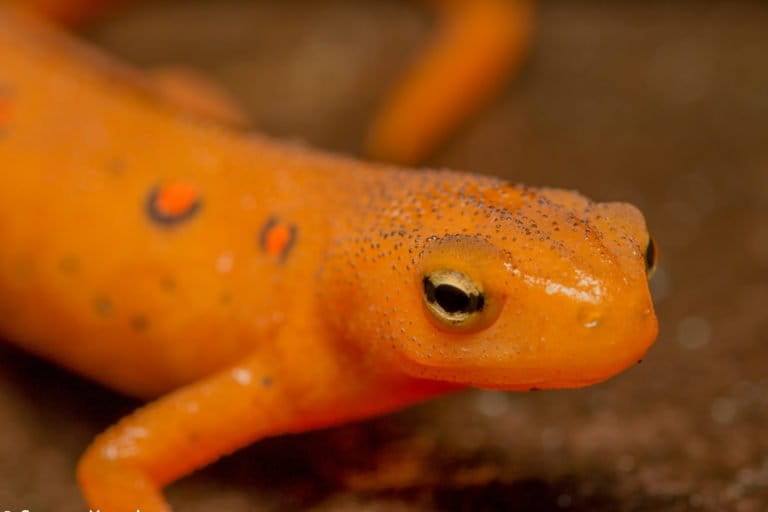Hellbenders are North America’s largest salamanders, living in rivers and growing to an incredible length of over two feet. Eastern newts are tiny and terrestrial, but both are susceptible to a fungal pathogen called Bsal. While Bsal has yet to make an appearance in the global hotspot of salamander diversity that is North America, it has wreaked havoc on populations in Europe, so biologists worry its impact could be even worse if it does.
Eastern newts’ susceptibility to Bsal coupled with their notable mobility mean they could act as “super-spreaders” of Bsal if the fungus ever gets to North America. For hellbenders, which are already listed as endangered and suffer from habitat degradation, a new pathogen is hardly good news.
Podcast host Mike DiGirolamo speaks with Dr. Becky Hardman from the University of Tennessee-Knoxville, and Dr. Anna Longo of the University of Florida about these fascinating and unique species, and they discuss what is being done to prepare for a Bsal invasion that some experts say is inevitable.
Subscribe to all of Mongabay’s podcasts for free on Apple channels. You can subscribe to Mongabay Explores on Spotify, Apple, Google, or wherever you get podcasts. Listen to all of the Mongabay Explores podcast episodes via the Mongabay website here.

More reading from Mongabay on this topic:
- Hellbenders threatened by disease and stress
They have been on the decline for at least 30 years, and in some parts of their range have disappeared completely. Researchers think this may be because they require cool, clean water, and much of their habitat has been degraded by human activity. - Super-spreaders: How the curious life of a newt could ignite a pandemic
Their susceptibility to Bsal coupled with their mobility mean eastern newts could act as “super-spreaders” of Bsal if the fungus gets to North America. - View Mongabay’s whole series on Bsal here
- United States Bsal Task Force website
Special thanks to Mike DiGirolamo – a journalist, marathoner, and actor living in Tennessee, right near the epicenter of salamander biodiversity in the U.S. – for hosting this “Mongabay Explores” podcast series.
If you missed episode 1, listen to his conversation with Dr. Karen Lips, “Are we ready?” here:
Episode 2 discussed the huge salamander diversity in North America, and the U.S. in particular, and explored reasons for this great richness:
The third episode discusses how researchers are searching for Bsal:
Episode four discussed how Canada, the U.S., and Mexico are working together to manage and mitigate the damage of the potential pandemic:
The fifth episode explored how policy and regulation could head off the looming salamander pandemic:
If you enjoy Mongabay’s podcasts, we ask that you please consider becoming a monthly sponsor via our Patreon page, at patreon.com/mongabay. Just a dollar or more per month helps us offset production costs and hosting fees, and can help us create special series like Mongabay Explores.
Banner photo: An eastern newt eft. Image by Steven Kersting (CC BY-NC-ND 2.0).
Transcript
Notice: Transcripts are machine and human generated and lightly edited for accuracy. They may contain errors.A transcript has not been created for this podcast.
















